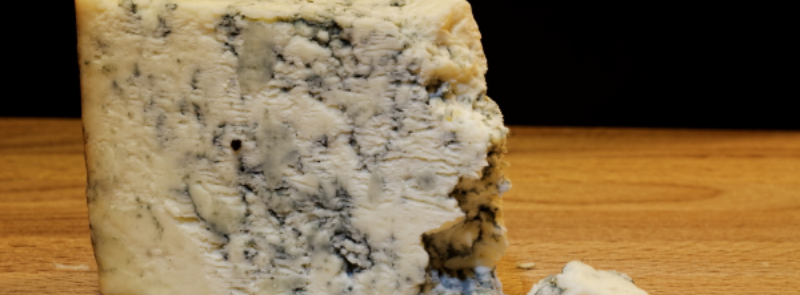
When It Occurs
Every October 9th
Timeline
Days Passed (812)
# Hashtags
#NationalMoldyCheeseDay #SayCheese
National Moldy Cheese Day, celebrated annually on October 9, brings attention to the fascinating world of cheese and its various molds. A cheesemonger, an expert in dairy products, might find offense at the notion of moldy cheese—well, unless it's a certain type of mold. Certain molds, such as red or brown-tinged ones, are indeed unwelcome. Moldy Cheese Day sheds light on the nuances of cheese appreciation!
History of National Moldy Cheese Day
- Origins: National Moldy Cheese Day was likely established by cheese lovers and connoisseurs to celebrate the unique qualities and culinary importance of moldy cheeses.
- Culinary Tradition: Moldy cheeses have a long history and are an integral part of various culinary traditions. They are produced using specific strains of mold that contribute to their distinct flavor profiles and textures.
Significance of National Moldy Cheese Day
- Appreciation of Unique Flavors: The day highlights the unique and complex flavors of moldy cheeses, encouraging people to explore and appreciate these gourmet products.
- Culinary Exploration: National Moldy Cheese Day promotes culinary exploration and experimentation with moldy cheeses in various dishes and pairings.
- Cultural Heritage: The day acknowledges the cultural and historical significance of moldy cheeses in different regions and their contribution to global gastronomy.
How to Celebrate National Moldy Cheese Day
-
Taste and Explore Moldy Cheeses:
- Cheese Tasting: Organize a cheese tasting session featuring a variety of moldy cheeses such as blue cheese, Roquefort, Stilton, Gorgonzola, and Camembert. Note the different flavors, textures, and aromas.
- Cheese Pairings: Experiment with pairing moldy cheeses with different foods and beverages. Common pairings include fruits like pears and apples, nuts, honey, crackers, and wines such as port, Sauternes, and red wine.
-
Culinary Experiments:
- Cooking with Moldy Cheese: Incorporate moldy cheese into various recipes. Make dishes like blue cheese burgers, Gorgonzola pasta, Roquefort salad, or a cheese platter with an assortment of moldy cheeses.
- Baking: Try baking with moldy cheeses by making items such as blue cheese bread, Gorgonzola-stuffed mushrooms, or savory cheese tarts.
-
Educational Activities:
- Learn About Cheese Making: Educate yourself about the cheese-making process, especially how moldy cheeses are produced. Read books, watch documentaries, or attend workshops about cheese production.
- Visit a Cheese Shop or Dairy: Visit a local cheese shop or dairy to learn more about different types of moldy cheeses. Engage with cheesemongers who can provide insights and recommendations.
-
Sharing and Socializing:
- Host a Cheese Party: Host a National Moldy Cheese Day party with friends and family. Provide a variety of moldy cheeses and accompaniments for guests to enjoy.
- Social Media: Share your moldy cheese experiences, recipes, and pairings on social media using the hashtag #NationalMoldyCheeseDay. Connect with other cheese enthusiasts and exchange ideas.
Popular Moldy Cheeses
-
Blue Cheese:
- Roquefort: A famous blue cheese from France, made from sheep’s milk and aged in limestone caves, giving it a tangy and slightly salty flavor.
- Gorgonzola: An Italian blue cheese that comes in two varieties: Dolce (sweet and creamy) and Piccante (strong and crumbly).
- Stilton: A rich and creamy blue cheese from England, known for its strong flavor and characteristic blue veins.
-
Soft-Ripened Cheeses:
- Camembert: A soft, creamy cheese from France with a bloomy rind and a rich, earthy flavor. It is often compared to Brie.
- Brie de Meaux: Another soft cheese from France, known for its creamy interior and mild, buttery taste.
-
Other Moldy Cheeses:
- Bleu d'Auvergne: A French blue cheese with a creamy texture and strong, pungent flavor.
- Danish Blue: A semi-soft blue cheese from Denmark, known for its sharp taste and crumbly texture.
Fun Facts About Moldy Cheese
- Historical Delicacy: Moldy cheeses like Roquefort have been enjoyed for centuries. Roquefort was mentioned in records dating back to 79 AD.
- Unique Production: The blue veins in moldy cheese are created by introducing specific mold cultures during the cheese-making process. The cheese is often pierced with needles to allow air to penetrate and mold to develop.
- Aging Process: Moldy cheeses typically undergo an aging process that can last from a few months to several years, depending on the type of cheese and desired flavor profile.
Inspirational Quotes About Cheese
- “Age is of no importance unless you’re a cheese.” – Billie Burke
- “Cheese – milk’s leap toward immortality.” – Clifton Fadiman
- “Life is great. Cheese makes it better.” – Avery Aames
Conclusion
National Moldy Cheese Day is a celebration of the unique flavors, textures, and cultural significance of moldy cheeses. By tasting and exploring different types of moldy cheeses, experimenting with recipes, learning about cheese-making, and sharing your experiences, you can fully embrace the spirit of this delicious day. Celebrate National Moldy Cheese Day by indulging in the rich and complex world of moldy cheeses, appreciating their place in culinary history, and sharing the joy of cheese with others.


